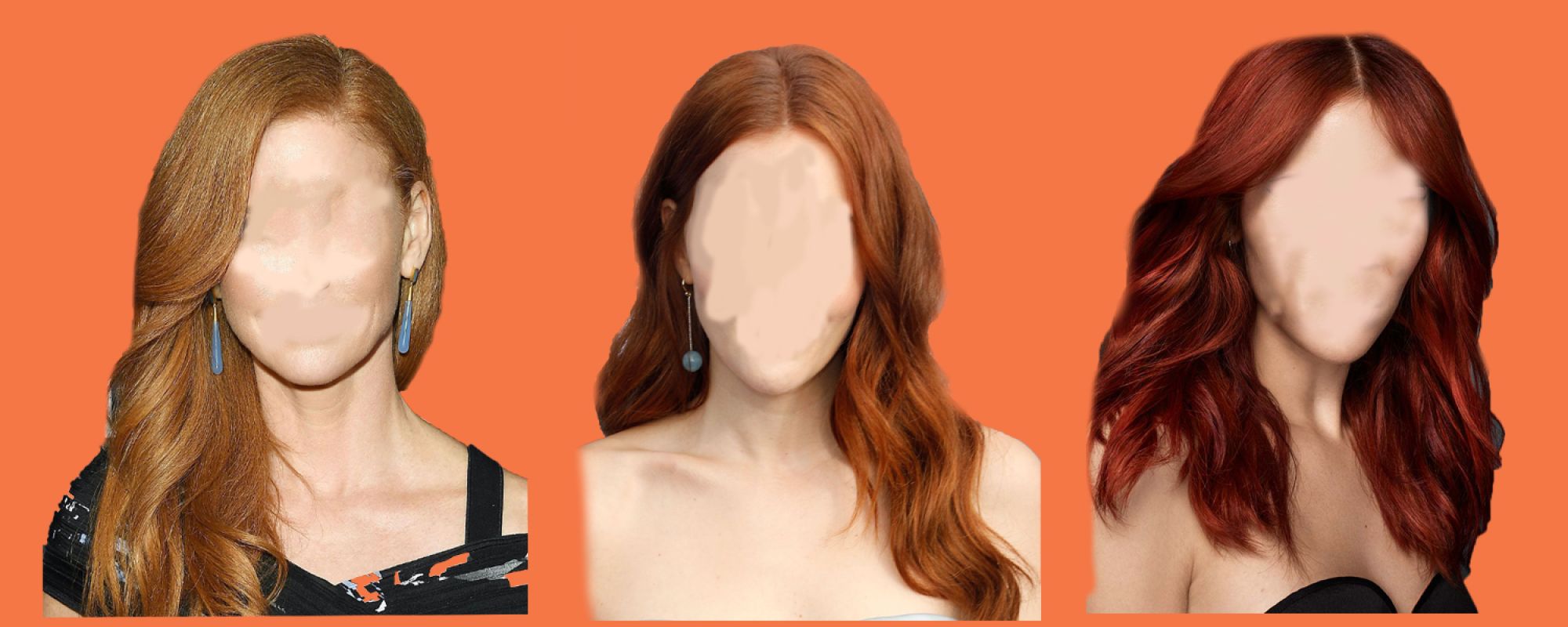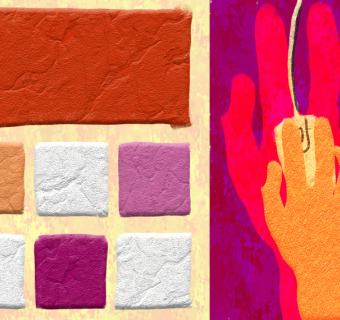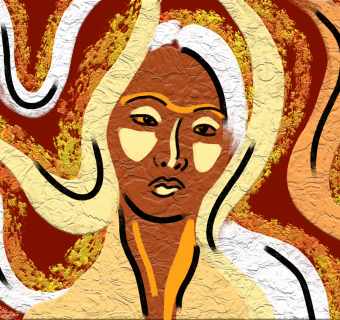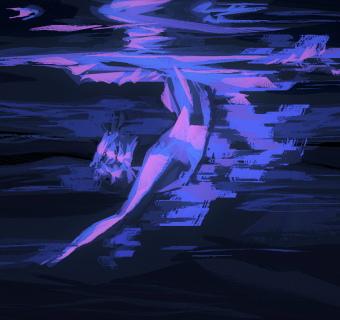Redheads, of course, are not like other girls. In literature (and just maybe in life), red hair is an encoded promise to deliver the heroine from standard girlhood; it guarantees a life worth telling, implying that most girls’ are not. Redheaded heroines are witty, undaunted, independent, and bold, qualified for narrative-worthy lives which “other girls” can’t access. She is the one whom the billionaire will adopt (Little Orphan Annie) or whose estranged parents will reunite after she meets and trades places with her long-lost identical twin sister (Annie James and Hallie Parker in Disney’s 1998 remake of The Parent Trap). She is utterly unbreakable, and her hair is a narrative magnet.
Unconventionally beautiful and charmingly defiant towards proper girlhood ideals, this heroine is brilliant, rule-bending, and ambiguously parentless. She is usually in trouble (or about to be) with adults who don’t comprehend her complexities, but the pretext for these troubles within the story—her disregard for her appearance and propriety, her sense of adventure—are also what endear her to readers outside of it. We love that Anne Shirley breaks a chalkboard over Gilbert Blythe’s head when he calls her “Carrots.” We treasure Pippi Longstocking with her skinned knees and pirate’s chest of gold coins, who can lift a horse above her head (with one arm, at that) and makes fun of the adults who don’t believe nine-year-olds should live with a pet monkey instead of a parent. We like that Anne and Pippi aren’t like other girls—as readers, we don’t seem to like other girls.

As much as we want to be the red-headed heroine, we are more afraid of what will happen if we’re not her. No one dresses up as Annika Settergren, Pippi’s cautious, well-kempt foil who lives next door, on Halloween, nor as Madeline’s classmates who catch colds after they go outside without their scarves (They followed the rules and did their laundry which did not dry. Madeline forgot to do hers and wears her scarf; she nurses Miss Clavel and her classmates back to health). They represent the “other girls” in the story who distinguish the heroine through their contrast. And we’ve been conditioned, through the books we read and the films we watch, to treat similarities with other girls as a grim prophecy if you aim to live an interesting life.
Yet the “other girl” is necessary to understand the heroine’s worth. When we understand the virtues of one within the context of another’s shortcomings, the heroine is exceptional to the extent her friends are not. For every Annie there must be an orphanage full of unadopted girls, and for Muggle-born witches like Harry Potter’s whimsical mother Lily, there are bitter and ordinary Petunias begging (unsuccessfully) for Dumbledore’s permission to join her sister at Hogwarts, reminding us that not every girl can be magical.
Not being like other girls has become an end in itself for literary heroines, for whom heroinism isn’t so much a fixed quality as it is a fixed difference. All “other girls” are necessarily deficient: they have no fixed identity, only the promise of not being special, no matter what “special” means in a given text. As in Harry Potter, we only recognize Madeline’s bravery (and personality) through her friends’ lack thereof, for which red hair is both cause and symbol. In a 1939 illustration, the Parisian children’s book heroine stands unfazed before a roaring tiger at the zoo while her 11 indistinguishable classmates cower in the background around an equally intimidated Miss Clavel. As young readers, we need them to shrink in anxiety to decode Madeline’s stance in front of the cage as daring. Audacity, then, is a desirable attribute because it doesn’t apply to the general population of girls, whose implied collective inadequacy is the beginning and end of our information about them. But when we understand women through a ranked hierarchy of their worth, their negative space is all the information we need.
In Disney’s The Little Mermaid, Ariel’s curiosity about “human stuff” (like forks and men with… legs) separates her from her six older sisters, whose differences are strictly limited to the colors of their hair (a range of not-red shades), tails, and seashell bras. Even though—depending on the gender politics of succession in Atlantica—the eldest is next in line to rule the underwater kingdom, all we know about the women in Ariel’s family from the original film is their lack of curiosity and compliance with an existing world order that segregated the under- and above-sea worlds. Even the most devoted Ariel fans among us couldn’t otherwise differentiate the eldest mersisters in the 1989 film because there literally is no difference: two actresses voice six characters, which I wouldn’t learn until writing this piece, despite having watched this movie three times a day, every day, between 2001 and 2002. Similarly, Bemelmans often illustrates Madeline’s classmates without faces; they are interchangeable, irrelevant, and forgotten by the time you turn the page. With this in mind, why would my tiny brunette self—or yours for that matter—dress up like them, much less care about them? They weren’t brave. I wanted to be brave.

We’re left to reconcile women’s inherent un-worth which, apparently, emerges in its monstrous, undesirable form when we’re together. Separating oneself from her female peers is a precondition for narrative-worthy adventure for heroines of all hair colors in literature. Isolation is paramount for Mandy (the titular character from my all-time favorite book by Julie Andrews Edwards is an Irish orphan who finds an abandoned cottage in the woods, makes it her home, and is ultimately adopted by the couple who owns the property), who only begins her adventure when she hops the orphanage fence and physically distances herself from the other girls, carving out a space from the ordinary world and charging it with magic to enact her separation.
Boys, some literature tells us, like girls who aren’t like other girls. Maybe, unfortunately, this explains why the trope of the girl unlike other girls feels immortal. When Elizabeth Bennet marries Mr. Darcy in Pride and Prejudice, she triumphs over the social-climbing women who wanted him and distances herself from the ridiculous women in her family. “I roused and interested you, because I was so unlike them,” she tells Darcy during their engagement. Elizabeth’s rationality positions her apart from these women, rendering herself the ideal woman for Darcy in the same way that Madeline’s verve qualifies her for literary heroinism to us, the little readers we were. “To be sure you know no actual good of me—but nobody thinks of that when they fall in love.” Darcy might not know her, but he does know how much he hates most women. This, it seems, is enough information.
Beverly Cleary wrote a near-identical relationship dynamic 150 years later in Beezus and Ramona, where “Beezus liked Henry, because she knew he thought she had more sense than most girls.” For Darcy and Henry, rationality is the rare quality among women which differentiates the exceptional woman from her sex and qualifies her for marriage and friendship, respectively. Elizabeth Bennet and Beezus Quimby (there’s a pairing you never thought you’d read) love it; they have risen above their circumstances, and the love interest noticed. Especially in Austen’s novel, other women are worse than anonymous: Lydia Bennet and Caroline Bingley are heinous. The perfect marriage plot ending in Pride and Prejudice is as uplifting for Elizabeth as it is condemning for the other women in tension with her. She is rational, they are hysterical. She persists across ages, eras, genres, cultures, classes—and so do they.
Where does a rising woman go? She runs away from women, but in important ways she runs towards men and masculinity, too. This subset of redheaded heroine boasts a vague boyishness. Even when the heroine isn’t a tomboy like Pippi, or wishes she were a boy outright like Jo March in Little Women, her mastery in typically masculine activities expresses her power. Merida from Disney’s Brave is a preeminent archer who uses her talent to win her own hand in marriage, becoming husband-like to rescue herself from an undesirable marriage plot. The Parent Trap twins are eleven-year-old fencing and poker champions whose Home Alone-level pranks reunite their family.
In other media, she is blind to her own beauty and puts no effort into her appearance. As an adolescent, this is tolerable and even charming. The understanding that she would be gorgeous if she tried almost always means she will be gorgeous when she tries. The makeover—her taming, if you will—is part of the bildungsroman’s architecture, by no means contained to redheads. I won’t make a list (Katniss Everdeen, Mia Thermopolis, Eleanor Douglas from Eleanor and Park), but the uninhibited, unkempt, boyish adolescent girl may not persist into adulthood.
The improper heroine’s un-girlishness—which may be a failure within the novel, but makes her admirable and lovable to the reader—can also redeem her to those who didn’t want, much less like, girls. Little Orphan Annie wins Mr. Warbucks’s heart despite his petulant refrains of “I wanted a boy!” earlier in the film; Annie apologizes for not being a boy and Mr. Warbucks forgives her in the stage version. Matthew and Marilla Cuthbert adopt the heroine in Anne of Green Gables despite having “ordered” a boy from the orphanage. Their arrivals are miscommunications and bureaucratic mistakes, respectively, but the Annes earn their adoptive parents once each proves she is not like other girls, but worth keeping, loving. The rising woman’s contrast to other characters’ expectations for girls compensates for her femaleness. It’s better not to wonder what would have happened to her if she were ordinary.

As exceptional as a redheaded heroine may be within her individual tale, there is a sameness between the heroines we reference, a convention to her unconventionality. Placed alongside one another, they feel iterative, unimaginative, generic, even—everything they stand against when they are allowed to stand alone. Many are orphans, more are writers, and each imagines herself into a vivid inner life. She might not be like other girls, but she is never “other.” Her exceptionality often expresses itself through boyish abandon, even if she doesn’t subvert femininity. She is apart within the group, but she is still in the group, whose standards we use to understand and celebrate her. (Madeline and her classmates are all Miss Clavel’s pupils, Jo is a March sister.) Her singularity is never too singular, and she poses no significant risk to the norms from which she semi-deviates.
Perhaps the redhead was tamed all along.
Not that I was thinking about any of this in 2011 when I (or, to be more specific, my best-friend-slash-accomplice Olivia) held a bottle of what would turn out to be very purple hair dye to my roots and squeezed. I didn’t think about why. I wanted to be special. Maybe I dyed my hair red because it was close enough. Maybe I was a bored seventh-grader who shouldn’t receive too much credit.
I would dye my hair consistently for the next eight years—lying to pass it off as natural for most of it—and only stop out of convenience while studying abroad. In its own warped, over-analyzed way, this felt like an agency-filled choice, almost as though I could encode myself traits I’d possessed all along. I wrote myself a better narrative, one I thought I deserved. I don’t think there’s a singular reason. To some extent it’s just a preference, but if I didn’t believe deep down that I didn’t want to be like other girls, I probably wouldn’t have done it (or written about it).
I don’t think this is a revolutionary statement. Many little girls would deign to be like other girls (like the three-year-old I saw at Carter Mountain this week wearing a “Different from Other Girls” graphic t-shirt who hurt my soul). “Special” meant red hair and its connotations for me—living as I had on a strict media diet of indestructible firetruck red-haired heroines—but it could be anything. I’m not like other girls because I enjoy sports, because I prefer being friends with boys (“girls are too much drama”), because I’m smart, I’m comfortable with myself, I have a voice. I use it often and well. For the most part, there is no harm in these statements, but tagged with “I’m not like other girls because,” the phrase characterizes all women as inferior in order to elevate one woman. We become dramatic, dumb, inarticulate, and self-conscious—invectives above which there is ample incentive to rise, but transcendence involves distancing oneself from the mass and reaffirming its stereotypes when she casts herself as its diammetric opponent. Woman rises. Women fall.
It was never about the hair.








